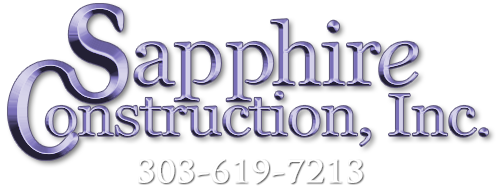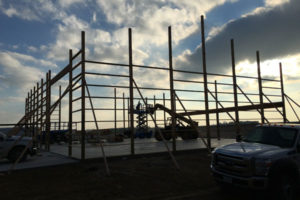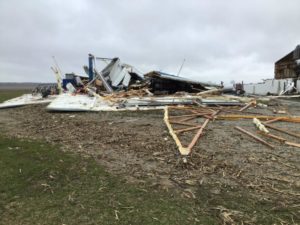
Colorado Winds Challenge Post Frame Buildings
Post frame buildings can look alike but have different structural composition. Quality varies. And durability makes an enormous difference in Colorado. Colorado winds land the state in the list of top 10 windiest states in the USA. So, the wind challenge comes with any large building project.
That’s why Lester Buildings assembles a complete building system where every component works to support the next. From sheathing and purlins to roof trusses and columns, and to the footings and the connections between them—everything connects. And we do not want weak links. Engineers at Lester Buildings explain. “Wind loads must be calculated for all building surfaces and the loads must be resisted by the building’s lateral system and carried from the roof trusses and purlins down to the foundation.”
Colorado High Winds
However, we can get some high wind pressure in Colorado. During wintry weather the Front Range experiences pressure differences: strong low pressure and cold high pressure. These create Chinook winds. The cold comes from the Western Rockies generating a Bora. These are the high winds as they come down the leeward slopes exceeding 100 miles an hour. Douglas County and Elbert County can get winds of 60-100.
During spring and hot weather, worn down slope winds of 40 miles an hour may come in from the southwest. Overall, it’s best to build away from the trees and power lines that become vulnerable during wind events.
Factors Used to Calculate Wind Load for Pole Barns
Building codes incorporate calculations and consider many factors. Factors include the wind direction, building exposure, topographic and ground elevations, and enclosure classification.
Colorado is a big state with varying terrain. Our wind loads vary depending on geographic locations and specific building sites. Basic wind speeds are calculated for each geographic location. The calculations are used by the American Society of Civil Engineers in ASCE 7 to calculate the wind pressure. Our buildings may be subjected to winds ranging from 100 miles an hour to the record 201 mph on top of the 14,259-foot Long’s Peak in Rocky Mountain National Park.
Three Types of Wind Force
A building’s structure and connections must be able to resist the force of the wind. Engineers concentrate on counteracting these three main wind forces.
– Uplift Load: the force that comes up underneath the roof
– Shear Load: forces causing the walls to tilt, usually coming from one direction at part of the building and another elsewhere
– Lateral Load: horizontal pressure exerted on the walls that can push the building off the foundation or overturn it
A Child’s Perspective
A large 12′ x 6′ post frame structure seen at a Children’s Science Center was being taken apart by another child so he could build his own. The second child removed one ceiling bolt and the entire structure crashed. Another little 4-year-old inquired, “Why did the building fall if he only took off one bolt?” There was no foundation. The trusses were not supporting the structure!
Respect the Need for Complete Building Systems
So, we know that Colorado winds challenge our buildings and we must engineer and manufacture each building to provide maximum durability and to stand the test of time. We need to live in harmony with the wind coming off the Rocky Mountains along the Front Range.
Colorado Contractors in Douglas County
Call us to find out how you can own a durable Colorado outbuilding. Sapphire Construction, Inc. at (303) 619-7213.
We offer post frame building systems constructed with the high-quality, engineer-tested Lester Buildings materials. In a July 2023 blog post at Lester Buildings, the company explains full system engineering needed to prevent the devastation of post-frame buildings during high wind events. The article explains the tremendous amount of pressure placed on anything in the path of the wind’s velocity.
See “Wind Loads and the Consequences of Not Meeting Them” at LesterBuildings.com
JUL
2023



About the Author:
Allen Randa is a second generation Master Carpenter and Owner of Sapphire Construction Inc. Allen personally manages each project from beginning to end. That includes the first meeting, the estimate, the contract and architectural designs.